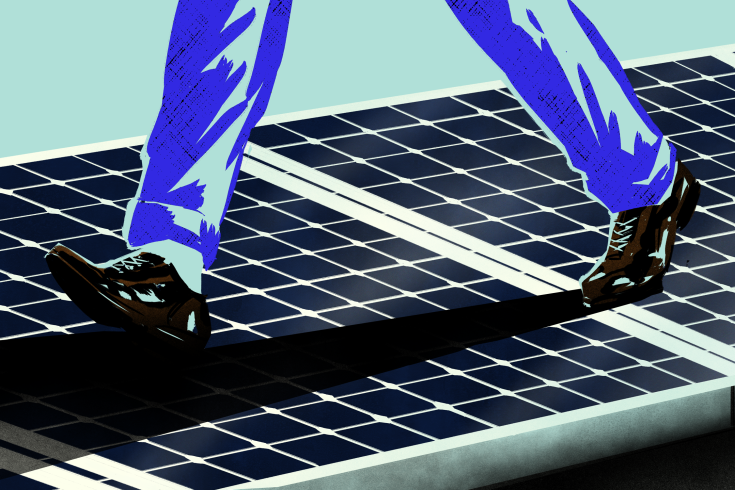This summer will see the planned opening of a solar-powered sidewalk on the campus of Thompson Rivers University in British Columbia. The 1,200-foot array should be able to generate about 15,000 kilowatt-hours a year — enough to power one and a half average American houses — even as students walk all over it.
A decorative compass that students and others at Thompson Rivers University walk over to enter the campus' Arts and Education Building will soon start generating solar energy as a "solar roadway." This summer, the dark concrete arms of the compass are going to be replaced by pieces of solar power generating material (a photovoltaic layer) encased in thick glass that is also salt-and-slip resistant.
"Solar panels are mounted usually on rooftops, so they're not very visible. This is actually an embedded solar technology," said Michael Mehta, a geography and environmental studies professor at TRU. "People will be able to walk on it, vehicles will be able to drive on it and it will — in the same way as these other rooftops systems — capture the energy from the sun and produce electricity to operate the Arts and Education building."
Vancouver company Solar Earth Technologies is donating the solar modules for the pilot Solar Compass project, which is led by Mehta and a group of faculty, staff, students and others in the community of Kamloops. "It's expected to produce about 10,000 kilowatt-hours a year of power, which we estimate is the equivalent of running all the computer labs in the building, about 40 computers, for eight hours a day on an annual basis."
Mehta said he hopes the project will inspire others to make use of the technology, which is already being used in other places around the world. He said the Netherlands already has a 70-metre bicycle path made from solar panels, and France is planning to build long stretches of "solar roads". "This is the start of a revolution," said Mehta, who said if successful it could potentially lead to solar roads around campus, and even in the city of Kamloops itself.
"The value of this technology is that it doesn't use any batteries or any storage of the power. It puts the power immediately into the grid … and it offsets the amount of power we have to generate elsewhere. "We see it as a lynchpin for a wider understanding of how to make the world livable and still have a good quality of life at the same time."
Source: http://www.cbc.ca

